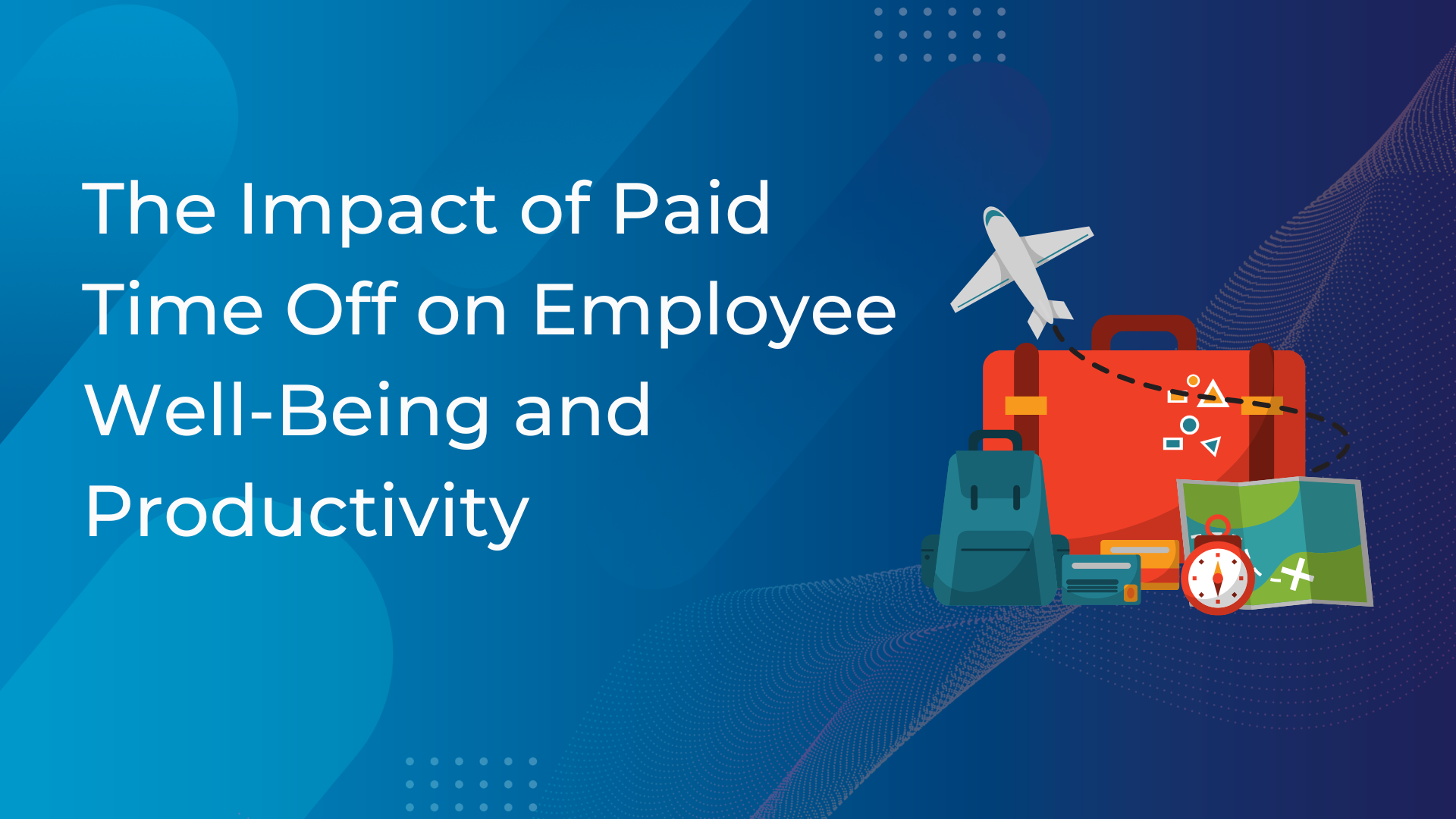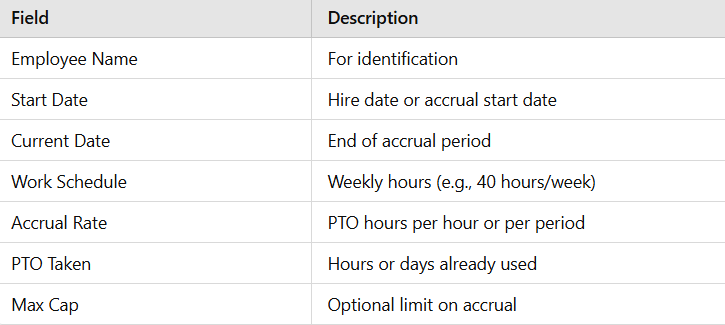Paid Time Off is a company policy where employers provide paid time off to their employees for a specified time frame. When employees are allocated a defined amount for paid leave, it can be used for any required purposes, such as vacation holidays, personal days, emergency days, sick days, maternity days, and other necessary days that employees can use when required.
In today’s era of increasing demands and expectations from employees to bring constant outputs at work, one can easily lead to burnout, eventually diminishing one’s career. Therefore, PTO becomes the most crucial initiative to allow employees to step away from their work and return with a new excitement.
As we know, funding and initiating employee benefits to increase productivity in the workplace is arguably the most critical part of shaping the organization’s success in the long run.
In this article, we’ll explore the multifaceted benefits of PTO and its impact on well-being and productivity in the workplace, with all the practical examples needed to optimize the company’s decision regarding its PTO policies.
The Connection Between PTO and Employee Well-Being
PTO plays a crucial role in improving the mental and physical aspects of life when it comes to promoting effective employee well-being programs. Here are a few factors that you must know:
Why PTO is Important for Mental Health?
Simply put, if you don’t prioritize mental health, you have to face many unfortunate psychological effects from it. Many mental breakdowns are caused by burnout due to excessive work, false recognition, office politics, and many other factors that are against employee well-being programs.
PTO becomes an essential benefit for maintaining mental health and allows employees to disconnect from any work-related stressors to reduce anxiety and depression, so that every employee can advocate and promote emotional stability.
Research at NIH proves that taking a vacation is not only plausibly linked to a lower risk of depression, but also increases productivity by providing a reprieve from all the work-related demands & stress while benefiting from the opportunities that offer leisurely activities and rest.
Therefore, employees returning from paid time off are more focused at work with reduced psychological fatigue.
What are the Physical Benefits of PTO?
We cannot ignore all the physical benefits we get from the PTO. According to APA, chronic stress at work can contribute to physical issues such as high blood pressure, cardiovascular disease, and a weakened immune system.
When employees take the needed time off to rest and refuel their energy by either sleeping or engaging in their favourite physical activities, it can lead to a more fulfilled life with healthy outcomes.
A strategic PTO can lead to better sleep, lower stress hormones, and a stronger immune system, making employees more resilient and less likely to take unexpected sick leaves.
At Revaluate180, our tailored programs enhance employee well-being and productivity through data-backed insights. Whether through PTO strategies or personalized development programs, we empower organizations to build a motivated and high-performing workforce.
How PTO Improves Workplace Productivity?
PTO is also an integral part of employee benefits to improve productivity and workplace performance.
Providing a well-structured and sufficient Paid Time Off is not just about promoting employee well-being; it directly benefits the organization’s financial stability, workforce productivity, and ultimate career growth.
As time off enables individuals to return to work with a fresh perspective, they are more focused, efficient, and creative without forcing anything upon them.
This results in employees being fully valued through generous PTO policies and reduced employee turnover rates. Here are a few effective examples to lean on:
Preventing Burnout and Improving Performance
Paid Time Off impacts productivity and is the most crucial reason for preventing employee burnout in the workplace. Burnouts, including chronic fatigue, detachment, reduced performance, and many other physical and psychological symptoms, significantly impair employees’ performance and their ability to function. Therefore, a flexible PTO policy can address and rectify these issues that can cause potential harm in the long run.
Boosting Creativity and Problem-Solving
Time off from work can become an effective driver for creativity. A proper PTO cultivates the benefit of the “Learn, Unlearn, and Relearn” strategy, where every problem needs a fresh perspective to find the solution and relearn the approach to make it effective at each iteration. This can only be done with good motivation and creativity, which PTO promotes.
Strategies for Companies to Optimize PTO Policies
Now that we know the connection between PTO and employee well-being, let’s understand the effective strategies we can use to optimize PTO policies.
To maximize the benefits of PTO, companies have to ensure the policies they’ve created to encourage employees to take time off are being taken full advantage of. That being said, here are some of the many effective strategies you can implement:
Encourage a PTO Culture
Fostering a work culture that supports and normalizes Paid Time Off is essential for the organization’s and its employees’ sustainable future. Managers should lead by taking time off themselves and openly discussing the benefits of disconnecting, that is, learning, un-learning, and re-learning strategy.
Companies can prioritise regular reminders regarding PTO balances and should actively promote vacations and family gatherings whenever needed. Demonstrating a commitment to work-life balance is the ultimate goal for reducing any stigma around taking PTO in the office.
Track and Analyze PTO Usage
While encouraging a PTO culture is the first step, analysing and tracking the PTO usage is the next and potentially the most crucial step. Organizations should find a way to monitor PTO patterns to identify trends and potential misuse of the policies.
If employees are constantly underutilizing their PTO, it can be a potential misuse of the policies and has to be rectified immediately. That’s where trend analysis comes in handy, as specific trends and patterns are revealed for a more effective strategy.
After analysing the PTO data and developing an effective strategy, proper tracking software and tools can be provided to the employees so they can take time off whenever needed and prevent burnout.
Flexible and Inclusive PTO Policies
After analysing the organization’s PTO data, the manager is responsible for initiating an effective PTO strategy and handing it over to others to do what is needed. A flexible, inclusive, and accommodating PTO strategy not only helps prevent burnout but also promotes all the other growth aspects of the company, such as mental & physical well-being, career growth, employee satisfaction, and, not to mention, improved productivity.
Inclusive policies that consider cultural or personal preferences foster a more equitable work environment and provide their employees with the freedom to schedule PTO without excessive bureaucracy to increase satisfaction and reduce job stress.
Common PTO Challenges and How to Overcome Them
Despite all the benefits we’ve discussed in this article, it’s equally important to mention the potential challenges of planning and implementing effective PTO strategies.
With PTO guilt being the most common issue, employees feel reluctant to take time off due to workplace pressure or fear of falling behind. This, even the most common, has been the most challenging issue to discuss at the workplace.
To combat this challenge, companies must promote a comprehensive plan emphasizing the importance of time off and promoting well-being.
Another common issue with PTO policies is that they do not ensure adequate staffing during peak vacation periods. To tackle this issue, clear PTO schedule guidelines and cross-training can help companies maintain operational stability.
Frequently Asked Questions (FAQ) About PTO, Well-Being, and Productivity
How does PTO improve employee well-being?
Paid Time Off allows employees to rest, recharge, and reset mentally and physically. Stepping away from work helps reduce stress, prevent burnout, and improve mood and focus. Employees who regularly use their PTO report better mental clarity, higher satisfaction, and stronger engagement when they return to work.
Why is PTO important for mental health?
Continuous work without adequate breaks can lead to chronic stress, anxiety, and even depression. PTO gives employees the chance to disconnect from professional pressures, spend time with loved ones, and engage in activities that promote relaxation. According to the National Institutes of Health (NIH), taking vacations has been linked to lower rates of depression and greater life satisfaction.
What are the physical health benefits of taking PTO?
Time off allows the body to recover from prolonged work-related stress. Studies from the American Psychological Association (APA) show that chronic stress contributes to high blood pressure, cardiovascular disease, and a weakened immune system. Regular rest, better sleep, and time for physical activity during PTO help employees maintain better overall health and reduce the risk of illness.
How does taking PTO impact workplace productivity?
Contrary to the belief that time off reduces output, PTO actually boosts productivity. Employees who return from vacation are more creative, focused, and motivated. They make fewer mistakes, solve problems faster, and bring renewed energy to projects. In the long run, encouraging PTO usage contributes to higher efficiency and lower turnover rates.
Can PTO really help prevent burnout?
Absolutely. Burnout occurs when prolonged stress and overwork lead to emotional exhaustion and reduced performance. Regular use of PTO gives employees time to rest and reset before stress becomes overwhelming. A well-managed PTO policy ensures employees take breaks consistently, preventing chronic fatigue and improving overall job satisfaction.
How does PTO encourage creativity and problem-solving?
When employees step away from work, they gain perspective. Time spent traveling, engaging in hobbies, or simply relaxing allows the brain to process information subconsciously. This mental reset often leads to fresh ideas and innovative solutions. Many companies report that employees return from PTO with renewed creativity and sharper problem-solving skills.
What can companies do to encourage employees to take PTO?
Organizations should actively promote a PTO-positive culture. This includes reminding employees to use their days, normalizing time off by having managers lead by example, and ensuring no negative consequences for taking leave. Companies can also use tools like Day Off or similar leave trackers to make requesting and managing time off simple and transparent.
How can businesses track and analyze PTO usage effectively?
Employers can use HR software or dedicated tools like Day Off to monitor PTO usage patterns. Tracking helps identify employees who underutilize their time off, which may signal stress or workload issues. It also ensures fairness and consistency, allowing HR to optimize staffing and adjust policies when necessary.
What are some common PTO challenges and how can organizations overcome them?
Common challenges include PTO guilt, underutilization, and staffing gaps during peak vacation periods. To overcome these, companies should:
Build a supportive culture that values rest and recovery.
Plan ahead with transparent scheduling tools.
Cross-train staff to cover absences effectively.
Encourage leadership to model healthy time-off behaviors.
These actions ensure PTO strengthens both employee morale and business performance.
How can flexible and inclusive PTO policies benefit a company?
Flexible and inclusive PTO policies recognize that employees have diverse needs, cultural holidays, family responsibilities, mental health days, or personal time. Allowing employees to tailor their time off builds trust, improves morale, and enhances retention. Inclusivity in leave policies also demonstrates respect for diversity and modern workplace values.
How does PTO contribute to long-term company success?
Organizations that prioritize PTO enjoy higher employee satisfaction, reduced turnover, and improved overall performance. A well-implemented PTO strategy fosters a sustainable work environment where employees feel valued and supported, translating into long-term loyalty, innovation, and profitability.
What role does leadership play in promoting PTO usage?
Leaders set the tone for workplace culture. When managers openly take their own PTO and encourage their teams to do the same, it normalizes healthy work-life balance. Leadership involvement is crucial in dismantling the stigma around taking time off and ensuring employees feel comfortable prioritizing rest without fear of judgment.
How does PTO tie into broader employee well-being programs?
PTO is one of the foundational components of employee well-being initiatives. It complements programs like mental health support, flexible work schedules, and wellness incentives. When integrated with these initiatives, PTO becomes a key driver of both personal health and organizational success.
What are best practices for optimizing PTO policies in modern workplaces?
The best PTO policies are transparent, flexible, and data-driven. Companies should:
Regularly review and adjust PTO structures based on employee feedback.
Encourage consistent use of available days.
Use data analytics to track trends.
Offer inclusive options that align with diverse needs.
These best practices create a balanced, high-performing workplace culture where employees thrive.
Final Thoughts
While employee benefits are an overall effective investment for your business, a flexible PTO strategy can become the most powerful tool for enhancing employee well-being and workplace productivity. Employees who feel encouraged and benefit from their PTOs experience better mental and physical health, resulting in greater job satisfaction and career growth.
Companies that prioritize PTO culture, monitor usage, and implement flexible policy changes create a more innovative and productive work culture. Embracing and optimizing PTO practices is crucial not only for supporting employees but also for ensuring long-term success.













